Clancy Tucker's Blog, page 119
April 20, 2019
21 April 2019 - A CIA-Issued Rectal Tool Kit for Spies
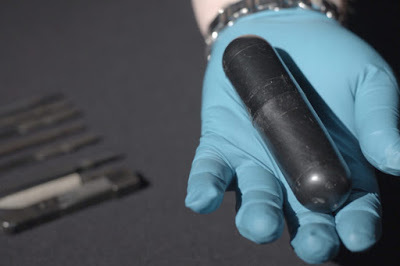
A CIA-Issued Rectal Tool Kit for SpiesG'day folks,I bet you already knew about these devices, but here goes. This imaginative gadget was designed to get operatives out of difficult situations.
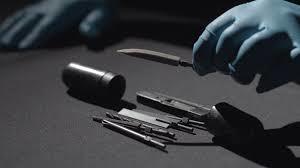
Among the espionage artifacts on display at the International Spy Museum in Washington, D.C., is the rectal tool kit: a tightly sealed, pill-shaped container full of tools that could aid an escape from various sticky situations. This gadget was issued to CIA operatives during the height of the Cold War, according to museum curator and historian Vince Houghton. The tools inside the kit include drill bits, saws and knives.

“What I see when I look at the rectal tool kit is a great example of problem solving in the intelligence world,” Houghton says. It had to be made with materials that could not splinter or create sharp edges that could injure users. Additionally, it had to seal tightly to not let anything seep in or poke out. According to Houghton, the kits supplied spies with all the tools to break out of a jail cell, and “sometimes this was a matter of life and death.”
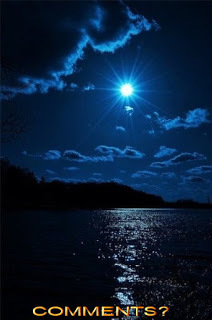
Clancy's comment: Not surprised in the slightest. Back in the days when I had dealings with prisoners in all of our major gaols, I saw some amazing items stashed in all orifices to avoid detection. Trust me. You would not believe me.
I'm ...
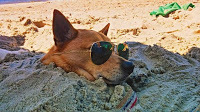

Published on April 20, 2019 14:50
April 19, 2019
20 April 2019 - WEIRD-LOOKING CREATURES THAT ROAM THE EARTH
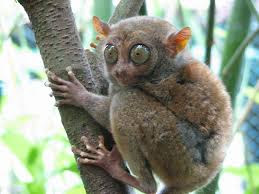
WEIRD-LOOKING CREATURES THAT ROAM THE EARTH
G'day folks,
Welcome to a collection of some odd-looking critters.
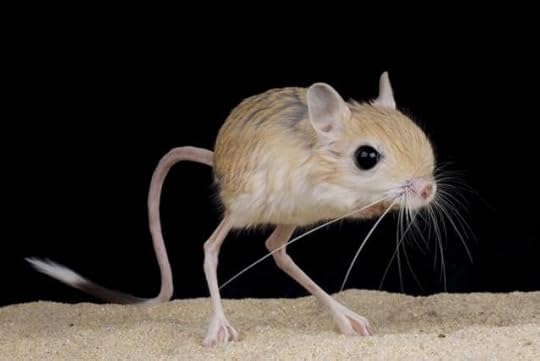
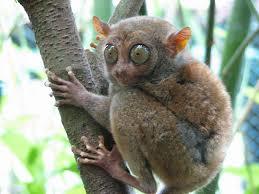

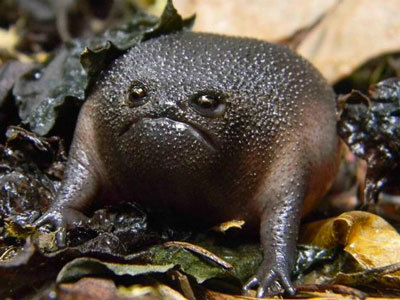
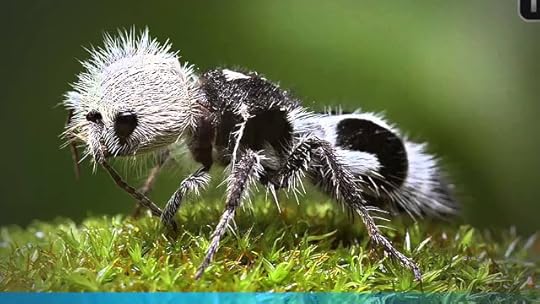
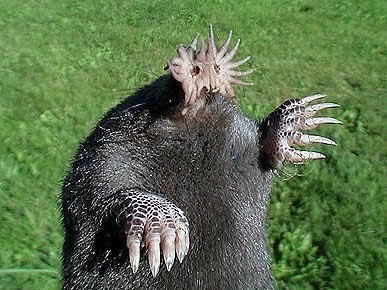

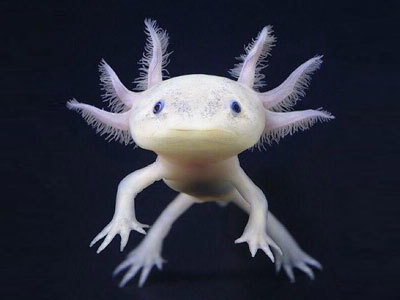

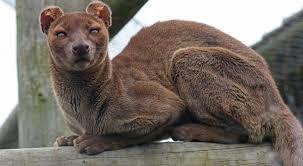
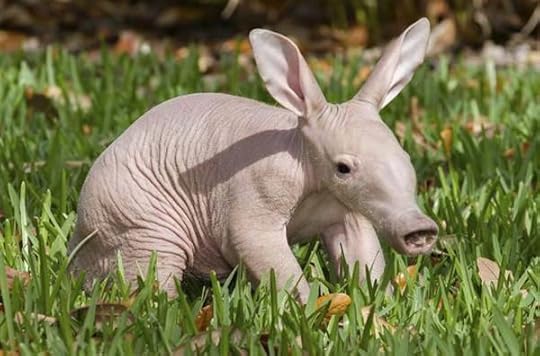
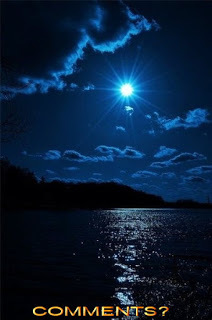
Clancy's comment: Mm ... Only a mother would love some of these characters. Question: Where would that crab with the red lips find lipstick?
I'm ...
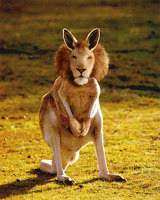
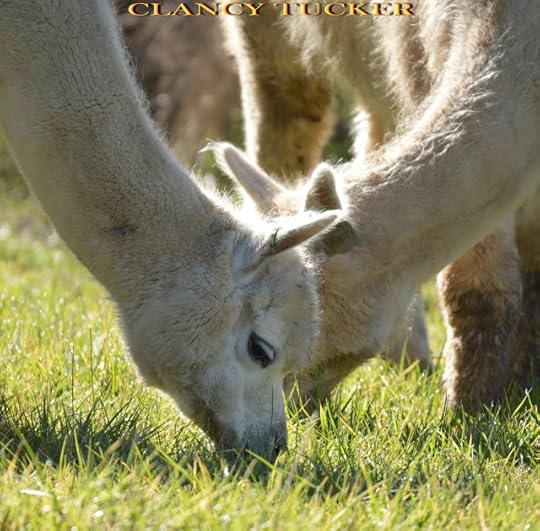
Published on April 19, 2019 13:11
April 18, 2019
19 April 2019 - PREHISTORIC SHARK FOSSILS FOUND
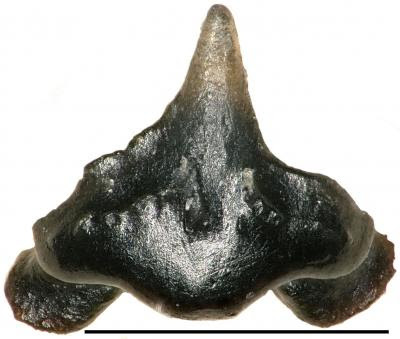
PREHISTORIC SHARK FOSSILS FOUND
G'day folks,
A good mate of mine will enjoy this post, He's been collecting fossilised shark's teeth for decades, and has a large collection.
The teeth of Galagadon nordquistaewere discovered in the rock that once surrounded the famous T. rexskeleton.
Dinosaurs tend to dominate our vision of the past. As large and imposing as they were in life, they loom even larger in our imaginations. But much more than just the "terrible lizards" lived and thrived during the Mesozoic era, and some of the creatures that lived alongside the dinosaurs actually bear a striking resemblance to the animals of today.
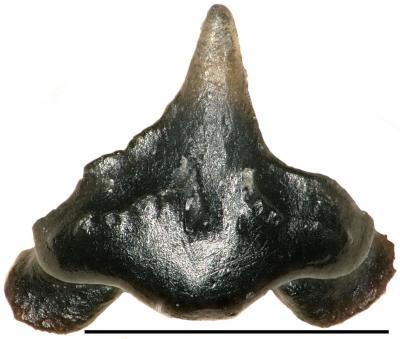
Sharks, for example, are some of the most successful creatures to ever live. Their fossil record stretches back about 400 million years and includes ancient species both strange and familiar. A new finding adds to the long-lived legacy of these marine predators. Fossil shark teeth were recently discovered alongside the bones of the most famous and complete T. rex skeleton ever found, helping to fill out a more detailed picture of life during the last days of the dinosaurian reign.
The tiny teeth, petrified tidbits about the size of a pinhead, look straight out of an 1980s videogame. They took a circuitous route to discovery, which started with the excavation of the nearly complete Tyrannosaurus known as “Sue” back in 1990. As the tyrannosaur’s bones were removed from the ground, the encasing rock, called matrix, was left around the bones to keep them safe until more detailed prep work could be carried out. Chicago’s Field Museum, where Sue resides today, saved the matrix for future sifting and study. Almost three decades later, those efforts yielded the tiny teeth of a shark that swam upstream in rivers to live in Sue’s neck of the woods.

"This shark lived at the same time as Sue the T. rex, it was part of the same world," said Pete Makovicky, the Field Museum's curator of dinosaurs and one of the authors of a study describing the new species, in a press release. "Most of its body wasn't preserved, because sharks' skeletons are made of cartilage, but we were able to find its tiny fossilized teeth."
North Carolina University paleontologist Terry Gates led the work to characterize the new shark species in the Journal of Paleontology . An appropriate name for the ancient shark was immediately apparent to the researchers. Each of the small, triangular teeth look like the persistent space invaders in the 1981 arcade classic Galaga . Thus, Gates and colleagues named the shark Galagadon nordquistae, with the species name also honoring museum volunteer Karen Nordquist for finding the first fossilized tooth.
"It was so tiny, you could miss it if you weren't looking really carefully," Nordquist said in a press release. "To the naked eye, it just looks like a little bump, you have to have a microscope to get a good view of it."
Based on comparisons with other fossil shark teeth, the team proposes that Galagadon belonged to a major shark family called orectolobiformes, or carpet sharks. DePaul University paleobiologist Kenshu Shimada agrees with this identification. Galagadon, he says, “serves as another example of the diversification of this shark group not only in oceans worldwide, but also in the freshwater systems in the terrestrial environments near the end of the so-called ‘Age of Reptiles.’” While only the teeth of Galagadon are known so far, their shape suggests that the living animal would have looked something like today’s bamboo sharks, a subset of carpet sharks found in the warm waters of the Indo-Pacific.
What has intrigued paleontologists about Galagadon, though, is what the shark can reveal about the world that Sue stomped around in. “The new study, including the recognition of the new species, sheds light on the complex evolutionary history of the freshwater system that existed in North America when T. rex roamed the Earth,” Shimada says.
Even though dinosaurs often dominate the spotlight, it’s often the meeker species that help paleontologists reconstruct what ancient environments were really like. Smaller animals such as frogs, turtles and fish can help narrow down the details of ancient habitats like climate and systems of waterways.

Until now, it seemed that the body of Sue was deposited in a lake that had been created by a nearly-dried-up river. It was thought to be a relatively self-contained habitat. But the presence of a shark species only known in ocean environments indicates that the river was likely connected to the sea, allowing Galagadon and other species to swim inland. Without the shark teeth, paleontologists would have missed this watery connection. Whether Galagadon moved in formation like its video game namesakes, though, will have to wait for future finds.

Clancy's comment: As you probably know, Australia is surrounded by ocean and one of our biggest fears is being attacked by sharks. However, not all sharks live in the sea. Some have two legs and walk amongst us.
I'm ...
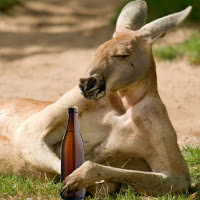

Published on April 18, 2019 14:11
April 17, 2019
18 April 2019 - MEMORABLE MOMENTS BEFORE MOBILE PHONES TOOK OVER
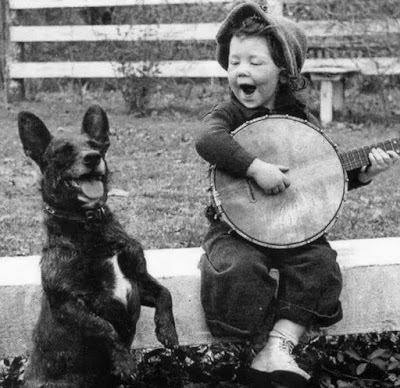
MEMORABLE MOMENTS BEFORE MOBILE PHONES TOOK OVER
G'day folks,
Childhood has almost always been an innocent time of exploration, adventure, and imagination. Though I sometimes wonder if today's kids are missing out on all the great fun we used to have when we were young.
Because they have so many amazing toys, cellphones, and video games, perhaps they actually are less good at making their own fun. Take a look at these rare photos of adorable youngsters enjoying themselves, and share them with your friends to remind the world how important the simple things in life are.




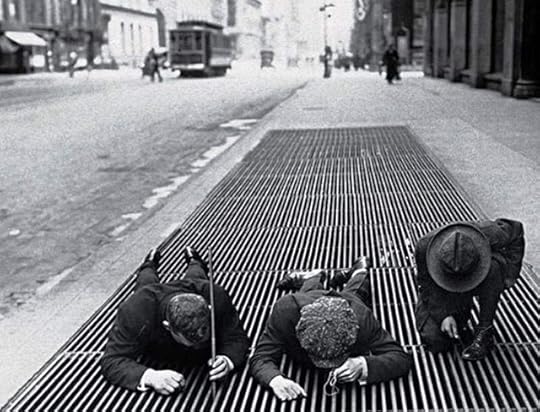
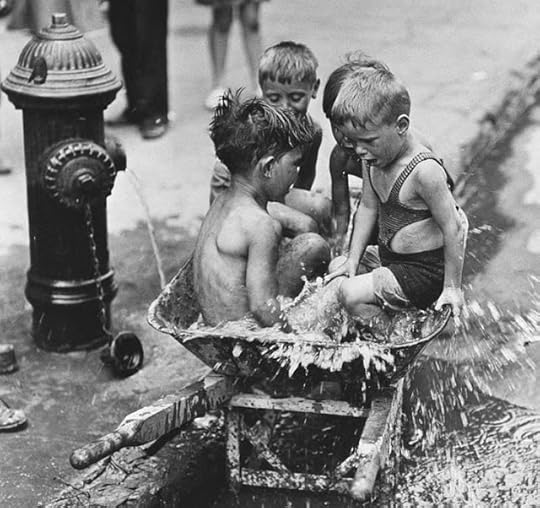
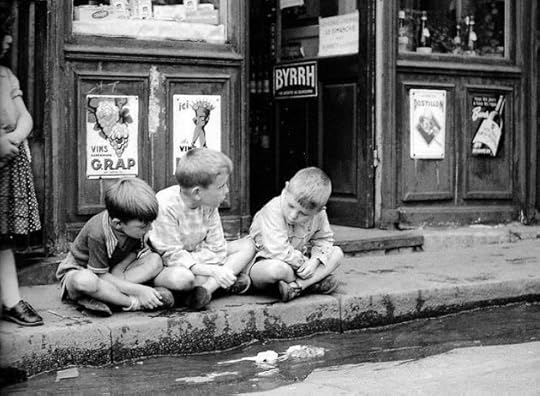






Clancy's comment: Yep, and I bet they were a lot healthier and wiser about things around them. I loved the kids splashing in the wheelbarrow.
I'm ...


Published on April 17, 2019 14:06
April 16, 2019
17 April 2019 - A Secret Doorway Has Been Found Leading to Caves Hidden Under a Castle.
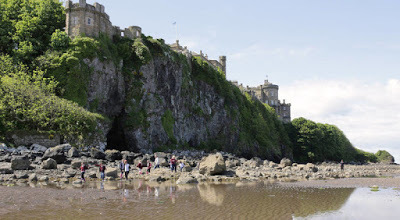
A Secret Doorway Has Been Found Leading to Caves Hidden Under a Castle.G'day folks,
A secret doorway in a castle has been found near Glasgow, and wine bottles have been also found in the caves.
SINCE THE LATE 18TH CENTURY, Culzean Castle has stood in its current form on the west coast of Scotland, less than 50 miles southwest of Glasgow. But the caves in the dramatic cliffs below the castle have been there for much, much longer. Recently, a team of volunteer archaeologists investigated the entrance of the Stables Cave and discovered a forgotten doorway, built hundreds of years ago to control access to the cave’s entrance.

Legends surround these caves—it’s said that they’re haunted, that they were used by smugglers, that fugitives hid here. The archaeology team also found wine bottles dating back to the 18th century, and it’s fun to imagine smugglers swigging down some booze while spending the day or night in the shelter of the caves. But it’s just as likely the bottles have a more mundane story behind them. Before the current castle was built, there was a castle here called House of Cove or Coif Castle, a nod to the caves below, and as early as the 14th century, there was a stone tower here. For many years, the caves were used as cellars, for provisions including wine.
Human use of the caves goes back even further—dating a charcoal sample from a different cave below the castle, shows evidence of human occupation in the Iron Age, somewhere between the years 135 and 325.

The most exciting discovery of the volunteer group, though, was the door, which was buried about three feet deep. They discovered two sides of the doorway, with stones stacked eight layers high, framing a space about 3.6 feet across. It could have “been secured with a draw bar,” according to the National Trust. If you have access to a good cave—all the more reason to keep other people out.
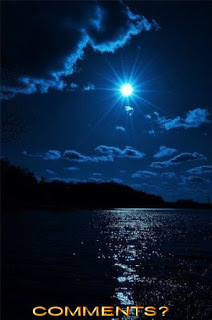
Clancy's comment: Wow, nice looking castle, eh? Reminds me of the 'Famous Five' series by Enid Blyton. Looks like a great writer's retreat.
I'm ...

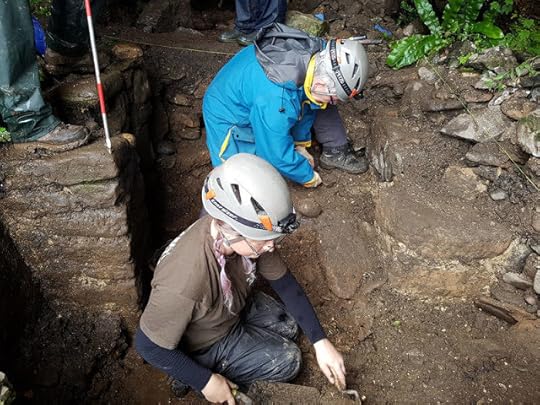
Published on April 16, 2019 13:22
April 15, 2019
16 April 2019 - BABY ORCA WHALE SPOTTED ALIVE AND WELL
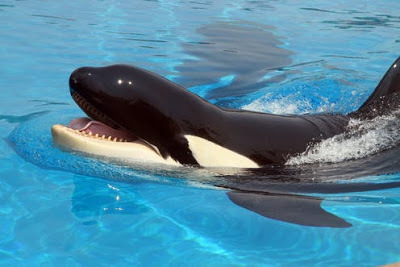
BABY ORCA WHALE SPOTTED ALIVE AND WELL
G'day folks,
Well, here is some good news. Researchers hope the new baby will reverse an unfortunate trend that has seen no southern resident orca calves survive over the past three years.
It has been a grim few years for southern resident orcas, which dwell in the waters off Oregon, Washington and British Columbia. Their numbers have declined dramatically as they struggle to find food, and in the face of dismal calf survival rates, experts worry that the population won’t be able to recover. But last week, a glimmer of hope emerged when a seemingly healthy baby orca was spotted frolicking amid one of the southern resident pods.
According to the Center for Whale Research (CWR), a Washington non-profit that monitors the southern residents, the new calf came to the attention of researchers after Seattle TV stations aired footage of groups of orcas near Puget Sound and “discerning viewers were able to see a very small whale among them.” Sure enough, when a CWR team was dispatched to investigate, the researchers could see a little orca swimming with the region’s “L” pod. (The other two southern resident social groups are known as “J” and “K.”) The mother of the new baby is a 31-year-old orca called L77, and the baby has been dubbed L124.
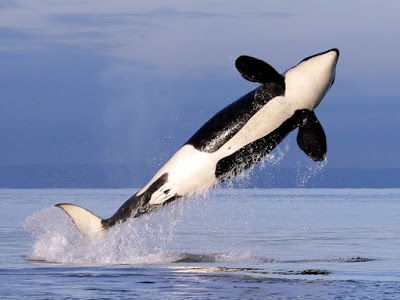
“The calf appeared to be about 3 weeks old,” the researchers wrote in a summaryof the encounter, adding that it was “bouncing around” the other orcas. The calf’s sex is not known at this time, but Harrison Mooney of the Vancouver Sun reports that experts are hoping it is a female so it can help replenish the flailing southern resident population.
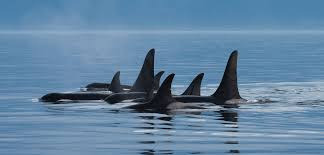
With the birth of the new calf, the southern residents now number 75—a welcome development, to be sure, but the population is still critically endangered. In 1995, there were 98 southern residents; in 2011, there were 89, and the orcas’ numbers have continued to drop. Their future is imperiled by a number of factors, including toxins in the water and rumbling from ship traffic, which can interfere with orcas’ ability to communicate about prey through echolocation. But a major threat pushing the animals towards extinction is a decline in Chinook salmon, the whales’ primary food source, due to habitat destruction and intense commercial fishing.
Without enough available food, southern resident orcas have been starving to death. According to the CBC ’s Bethany Lindsay, researchers expect that two more whales will die of starvation by summer.

The fate of the new baby is also far from certain. Around 40 percent of calves do not survive past the first few years, according to the CWR, and southern resident orcas have particularly struggled to keep their young alive. Over the past three years, no babies born to the population have survived—a concerning reality that came to national attention last August, when a southern resident orca named Tahlequah pushed her dead calf through the waters of Puget Soundfor 17 days.
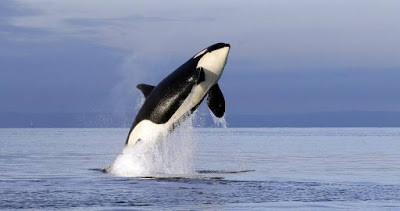
L77, the mother of the new baby, has had two other calves: one, born in 2010, did not survive past its first year, but a female born in 2012 is still alive. Only time can tell how baby L124 will fare, but CWR founding director Ken Balcomb tells Lynda V. Mapes of the Seattle Times that the calf appears healthy. And so the appearance of the little orca, he says, is “great news.”
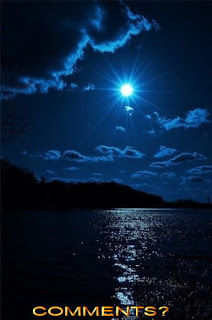
Clancy's comment: Fingers crossed, eh? I'm still hoping to get up close and personal with any whale.
I'm ...

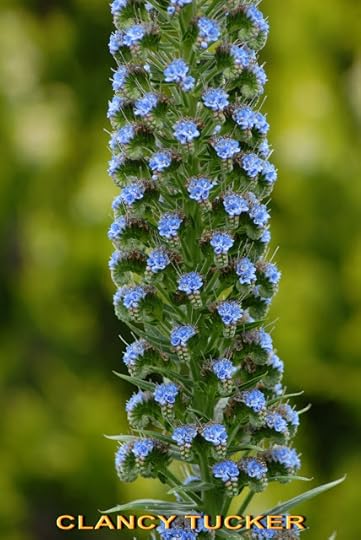
Published on April 15, 2019 14:03
April 14, 2019
15 April 2019 - SOME VERY INTERESTING FACTS ABOUT REMBRANDT

SOME VERY INTERESTING FACTS ABOUT REMBRANDT
G'day folks,
Rembrandt Harmenszoon van Rijn was a Dutch draughtsman, painter and printmaker. An innovative and prolific master in three media, he is generally considered one of the greatest visual artists in the history of art and the most important in Dutch art history.
Artists are constantly using new pigments and oils to produce more vibrant, luminous and interesting colors. Rembrandt van Rijn was no different. The Dutch Old Master had technique, creativity and painstaking labor going for him. He also had chemistry. A new analysis of his works shows he used a rare compound in some of his paints, which helped him pull off his signature impasto technique, Henri Neuendorf at artnet News reports.

Historians already knew that Rembrandt used readily available compounds such as lead white pigment and oils like linseed oil to make the paste-like paints he piled in thick layers to give his work a three-dimensional appearance. When a team of researchers from The Netherlands and France subjected tiny paint samples from three of his best-known works—"Portrait of Marten Soolmans,” “Bathsheba” and “Susanna”— to X-ray analysis at the European Synchrotron in Grenoble, France, however, they detected another compound they weren't expecting: a lead carbonate mineral called plumbonacrite, Pb5(CO3)3O(OH).The finding in his impasto mix was especially surprising since plumbonacrite is generally found in 20th-century works onward, though it did pop up in a sample of a Vincent van Gogh red lead pigmentsampled from “Wheat Stack under a Cloudy Sky” (1889). That being said, Rembrandt was painting in the first half of the 1600s.
 “We didn't expect to find this phase at all, as it is so unusual in Old Masters paintings,” Victor Gonzalez, lead author of the study and scientist at the Rijksmuseum and Delft University of Technology said.So where did this unusual compound come from? After studying historical texts and determining what would have been available to a 17th-century Dutch artist, they believe he intentionally added the compound in the form of lead oxide or litharge to his oils to make a paste-like paint. “[O]ur research shows that its presence is not accidental or due to contamination, but that it is the result of an intended synthesis,” says Gonzalez.
“We didn't expect to find this phase at all, as it is so unusual in Old Masters paintings,” Victor Gonzalez, lead author of the study and scientist at the Rijksmuseum and Delft University of Technology said.So where did this unusual compound come from? After studying historical texts and determining what would have been available to a 17th-century Dutch artist, they believe he intentionally added the compound in the form of lead oxide or litharge to his oils to make a paste-like paint. “[O]ur research shows that its presence is not accidental or due to contamination, but that it is the result of an intended synthesis,” says Gonzalez.

Knowing the composition of the artist’s palette will help conservationists figure out how to best preserve his artworks over time. The team now has plans to re-create Rembrandt’s impasto paint and artificially age it in high CO2 and CO2-free conditions to better understand how humid and dry conditions impact the paints.They also hope to look at other paintings by Rembrandt and fellow Dutch Golden Age painters to see if the use of plumbonacrite-bearing compounds was more widespread than previously thought.“We are working with the hypothesis that Rembrandt might have used other recipes, and that is the reason why we will be studying samples from other paintings by Rembrandt and other 17th century Dutch Masters, including Vermeer, Hals, and painters belonging to Rembrandt's circle,” co-author Annelies van Loon, a painting research scientist at the Rijksmuseum and the Royal Picture Gallery Mauritshuis, says in the release.
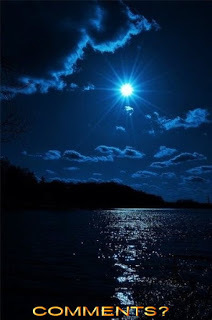 Clancy's comment: Interesting. I guess the old masters were always looking for something to enhance their work.I'm ...
Clancy's comment: Interesting. I guess the old masters were always looking for something to enhance their work.I'm ...


Published on April 14, 2019 14:24
April 13, 2019
14 April 2019 - MONIQUE CAIN - GUEST AUTHOR, MOTHER, AND AUTISM ACTIVIST
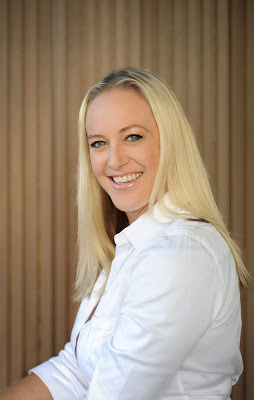
MONIQUE CAIN- GUEST AUTHOR, MOTHER AND ACTIVIST FOR AUTISM -
G'day folks,
I've interviewed hundreds of authors in the past eight years, but this lady is certainly worth listening to. Monique has a personal passion, and good for her.
Welcome, Monique ...
1. TELL US A LITTLE ABOUT YOURSELF AND YOUR WRITING JOURNEY.
I am a mother of 2 children diagnosed with ASD (Autism Spectrum Disorder). After initial struggles with my daughter Madi, requests from teachers of how they could understand her better and comments from another child that “Madi is dumb” and “Madi doesn’t know anything”, I started writing the now published ‘The Everyday Autism Series’. The series includes 5 illustrated children’s books, Madi, Madi at Kinder, Madi Starts School, Madi Goes Shopping and I Am Thomas. They are written in simple rhyming language, yet informative for both children and adults to gain valuable knowledge. I gave my children and others a voice, using our family’s true experiences to help provide understanding and raise more awareness. I also blog about my 2 children to give hope, support and inspiration to other children and families living with autism. I am currently in the process of publishing a short novel for parents, families etc. titled 'Never Give Up', Riding the Emotional Roller Coaster of an Autism Parent.
2. WHEN AND HOW DID YOU BECOME A WRITER?
Over the years, I have written bits and pieces but I officially became a serious writer approximately 5 years ago after initially wanting to help my daughter and as a true form of therapy for myself.
3. WHAT TYPE OF PREPARATION DO YOU DO FOR A MANUSCRIPT? DO YOU PLAN EVERYTHING FIRST OR JUST SHOOT FROM THE HIP?
I just write all of my thoughts and feeling down and then edit and put it all together as I go along.

4. WHAT DO YOU ENJOY MOST ABOUT BEING A WRITER?
Being able to tell my/our story and having others appreciate my words, knowledge and experience.
5. WHAT IS THE HARDEST THING ABOUT BEING A WRITER?
Having complete confidence in putting myself, my family and my inner most personal thoughts and feelings out there on such a public scale to be judged...
6. WHAT WERE YOU IN A PAST LIFE, BEFORE YOU BECAME A WRITER?
I still maintain a variety of different hats including becoming a writer. A mother, wife, friend, daughter, dance teacher, office worker, exerciser and socializer.
7. WHAT IS YOUR GREATEST WRITING ACHIEVEMENT?
Creating my own brand and business and writing, publishing and selling books Australia and worldwide!
8. WHAT ARE YOU WORKING ON AT THE MOMENT?
A short novel for parents, families etc. titled 'Never Give Up, Riding the Emotional Roller coaster of an Autism Parent'.
9. WHAT INSPIRES YOU?
My children and the thought of being able to help others by telling my story and sharing our experiences.
10. WHAT GENRE DO YOU WRITE?
Autobiographical and children's at this stage...
11. DO YOU HAVE ANY TIPS FOR NEW WRITERS?
Write... put all your thoughts and feelings on paper and see where it leads you...?
12. DO YOU SUFFER FROM WRITER’S BLOCK?
I have days when the words and thoughts don't come or flow as easy as others, depending on how I feel or what is happening in our life...?
13. DO YOU HAVE A PREFERRED WRITING SCHEDULE?
Mostly nights but whenever I have a fleeting thought, I write it down or repeat it in my mind to produce later that night.

14. DO YOU HAVE A FAVOURITE WRITING PLACE?
On the couch in the lounge room, lap top on my lap or paper and pen in hand in front of the TV or in my bed the same way.
15. WHAT IS YOUR GREATEST JOY IN WRITING?
The therapeutic release I feel putting my feelings on paper, giving my children a voice and being able to help others. I am also so proud to have set goals and achieved them!
16. WHO IS YOUR FAVOURITE AUTHOR AND WHY?
I am not much of a reader myself, so I don't actually have a favourite author?
17. WHAT’S THE GREATEST COMPLIMENT YOU EVER RECEIVED FROM A READER?
There have been many but receiving positive feedback from other Autism parents, from exactly what the books were designed for are the best...! Such as, “These books have changed the way kids see my son. His transition into kinder has been made a lot easier by these books being read to the class.”
18. WHAT WAS THE WORST COMMENT FROM A READER?
I don't believe I have really received any negative feedback to be honest?
19. WRITERS ARE SOMETIMES INFLUENCED BY THINGS THAT HAPPEN IN THEIR OWN LIVES. ARE YOU?
Yes! Absolutely and completely!
20. OTHER THAN WRITING, WHAT ELSE DO YOU LOVE?
My children, husband, family, friends, shopping, exercising, sports, watching a movie, diner and drinks, holidays, basically living and enjoying life!
21. DID YOU HAVE YOUR BOOK / BOOKS PROFESSIONALLY EDITED BEFORE PUBLICATION?
Yes!
22. DESCRIBE YOUR PERFECT DAY.
Exercise, shop, sun, beach, write, sales, friends, eat, drink, a movie, cuddling my family throughout and seeing them happy!
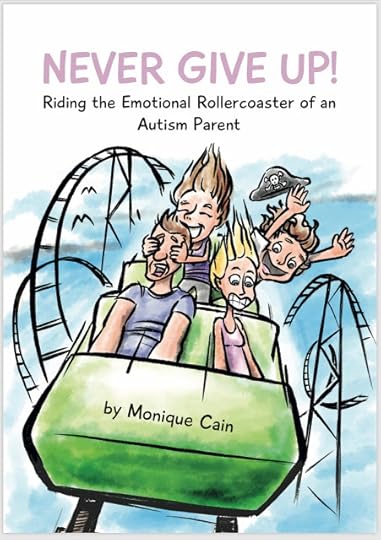
23. IF YOU WERE STUCK ON A DESERT ISLAND WITH ONE PERSON, WHO WOULD IT BE? WHY?
My husband, my soul mate, the love of my life. We have experienced everything together in life and we can enjoy each others company whatever scenario...
24. WHAT WOULD YOU SAY IF YOU HAD THE CHANCE TO SPEAK TO WORLD LEADERS?
It should be compulsory for every school, kinder, daycare centre and house hold to have a set of 'The Everyday Autism Series'! LOL!
Everyone needs to be more kind, friendly and understanding to all people, especially those who may act a bit differently. Spend less money on political campaigns, roads, celebrities etc. and more emphasis on cures, causes, health and well-being.
25. WHAT ARE YOUR PLANS FOR THE FUTURE?
To see what happens, you never know what's around the corner...? Enjoy life and appreciate all the little things...
26. WHAT ARE YOUR VIEWS ON BOOK TRAILERS? DO THEY SELL BOOKS?
Not sure?
27. DO YOU SEE YOURSELF IN ANY OF YOUR CHARACTERS?
Yes, all of them...!
28. DOES THE PUBLISHING INDUSTRY FRUSTRATE YOU?
Yes! It is a very long, uncertain process, so I ended up taking it upon myself... It is hard to establish yourself and sell books.
29. DID YOU EVER THINK OF QUITTING?
No, 'Never Give Up!'
30. WHAT WAS YOUR FAVOURITE MANUSCRIPT TO WRITE? WHY?
All of them. They are all great senses of achievement, progress and important messages. The short novel has been a much bigger project...

31. HOW WOULD YOU DEFINE ‘SUCCESS’ AS A WRITER.
Receiving positive feedback and praise, selling books Australia and worldwide with regular/repeat wholesales, publishing a number of books and achieving goals I set.
32. WHAT SHOULD READERS WALK AWAY FROM YOUR BOOKS KNOWING? HOW SHOULD THEY FEEL?
They should become more Autism aware, more kind, friendly, understanding, knowledgeable, hopeful and inspired.
33. WOULD YOU LIKE TO HAVE YOUR BOOKS MADE INTO MOVIES? EVER WRITTEN A SCREENPLAY?
Yes! Even a cartoon series on ABC for kids!
34. HOW MUCH THOUGHT GOES INTO DESIGNING A BOOK COVER?
I had an illustrator draw a character version of pictures/ideas I had, obviously relating to the books. I wanted them to tell the story in itself. They need to be inviting, interesting, unique and worthy of picking up of the shelf.
35. WHAT’S YOUR ULTIMATE DREAM?
To build a worldwide recognized brand and business with additional books, and various Autism resources and products (sensory clothing range, cartoon etc.) To be a role model, continuing to raise Autism awareness, promote inclusion, give hope and inspire others.
36. WRITING IS ONE THING. WHAT ABOUT MARKETING YOU, YOUR BOOKS AND YOUR BRAND? ANY THOUGHTS?
It is very time consuming! I use a lot of social media to blog about our daily life and pass on other helpful and relevant information as well as promoting my brand and books.
37. ARE YOUR BOOKS SELF-PUBLISHED?
Yes! I didn't hear back from anyone I sent drafts to and had an important, pressing message to convey... So, I couldn't wait and found a team of people to help me bring it all to life.
38. DESCRIBE YOURSELF IN FIVE WORDS.
Passionate, inspirational, hardworking, relentless, hopeful
39. WHAT PISSES YOU OFF MOST?
Judgment!
40. WHAT IS THE TITLE OF THE LAST BOOK YOU READ? GOOD ONE?
Dynamic Direct Response Copywriting. The proven way to build relationships and grow your business.

41. WHAT WOULD BE THE VERY LAST SENTENCE YOU’D WRITE?
Never Give Up!
42. WHAT WOULD MAKE YOU HAPPIER THAN YOU ARE NOW? CARE TO SHARE?
Knowing that my children will be okay and looked after, when my husband and I are no longer around...!
43. ANYTHING YOU’D LIKE TO ADD?
Please check out my website social media pages and books and pass on to anyone else you think may benefit from them and our story. Follow your dreams and 'Never Give Up!'

WEBSITE
MONIQUE'S BOOKS

Clancy's comment: Go, Monique! Your gorgeous kids have provided you with an extraordinary purpose and passion. Go for it.
You've won me, and I'd encourage everyone to check out your website.
Love ya work!
I'm ...


Published on April 13, 2019 14:04
April 12, 2019
13 April 2019 - A COLLECTION OF AMAZING MOVING PICTURES

A COLLECTION OF AMAZING MOVING PICTURES
G'day folks,
Welcome to some stunning moving pictures.
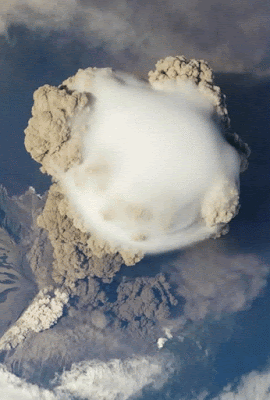

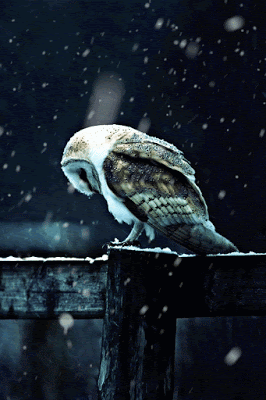
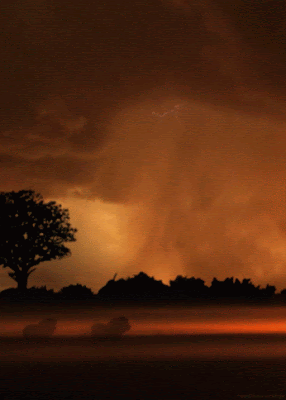
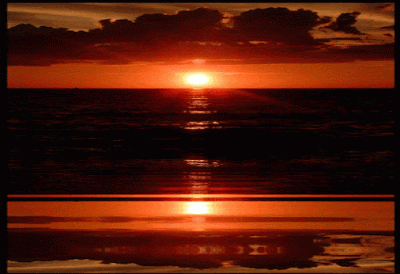
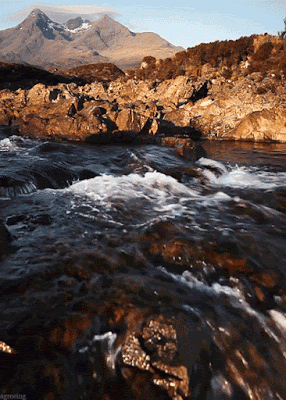
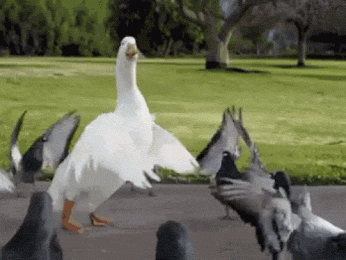


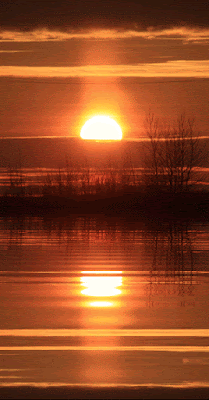
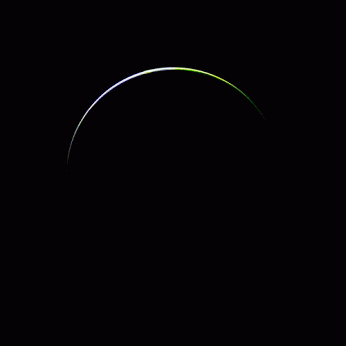
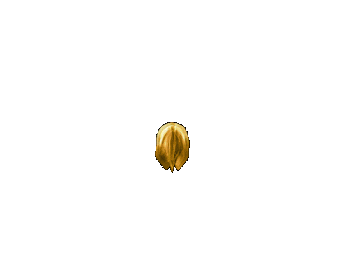

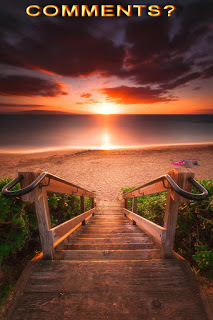
Clancy's comment: Okay, which was you favourite? I liked the sliding ball. Man, how do they do that?
I'm ...
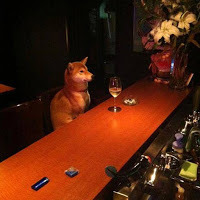

Published on April 12, 2019 14:46
April 11, 2019
12 April 2019 - BEAUTIFUL SINKHOLE IN MEXICO - Cenote Ik-Kil
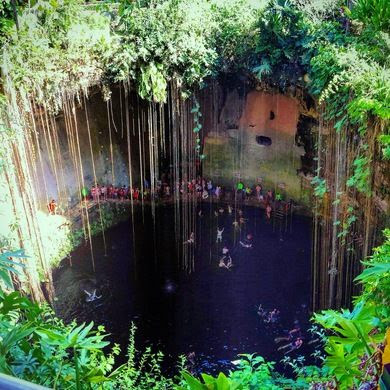
BEAUTIFUL SINKHOLE IN MEXICO - Cenote Ik-Kil -G'day folks,
Welcome to a beautiful sinkhole on the Yucatan peninsula, adorned with mini waterfalls and hanging vines.
Just down the road from the famous pyramids of Chichen Itzalies one of Mexico’s most stunning sinkholes, or “cenotes,” Ik-Kil.
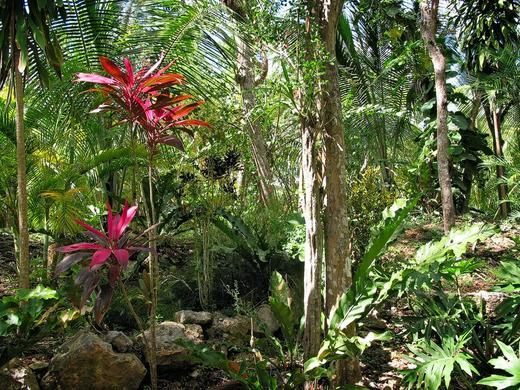
One of the most ethereal qualities of Ik-Kil is the light filtering in from above, illuminating the mini waterfalls, vegetation, and vines that wrap their way around the edges of the cenote and hang directly from overhead like a curtain. The sinkhole clocks in at a depth of over 130 feet, and archaeologists are said to have found bones and jewelry in the watery depths of what was once a sacred Mayan sacrificial site.
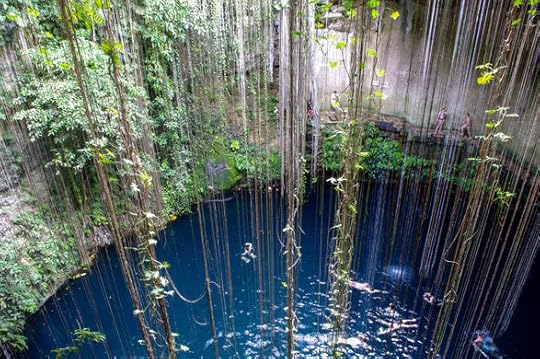
Visitors to this magical place descend down 85 feet of winding stone steps. From there it’s either a short jump into the water, or a considerably taller dive off a platform if you feel like joining the daredevils in line. (After rinsing off in outdoor showers so as not to bring unwanted chemicals or debris into the water’s careful ecosystem.)

The site boasts a restaurant and overnight accommodations, as well as lockers and life vests for swimmers. The water remains cool throughout the spring months, and black catfish can be spotted swimming about alongside visitors. Ik Kil’s most recent claim to fame is its title as a Red Bull Cliff Diving World Series venue in 2010, 2011, and 2014.
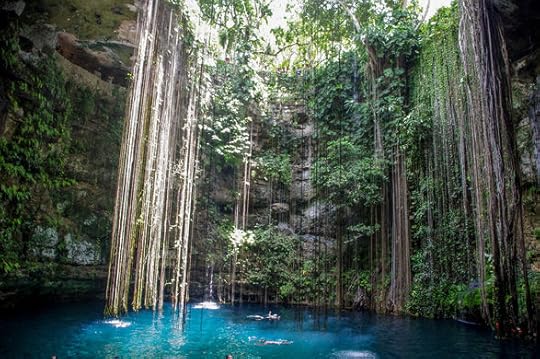
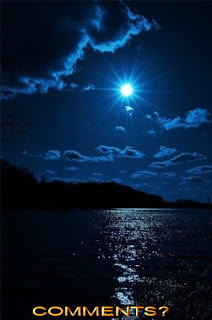 Clancy's comment: Wow. Beautiful place, eh?
Clancy's comment: Wow. Beautiful place, eh?I'm ...


Published on April 11, 2019 14:53



